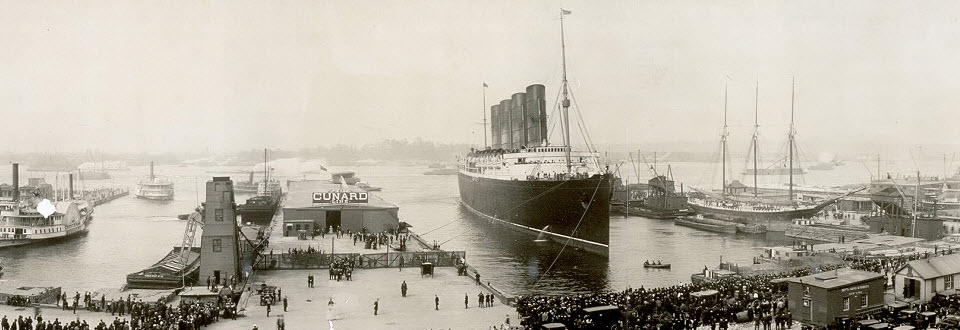Explore the History of Cunard
Embark on a captivating journey through maritime history, exploring the legacy of Cunard Line. Founded in 1839 by a group of investors led by Sir Samuel Cunard, the company secured the very first British Government contract to provide a consistent mail service across the vast North Atlantic. Since those pioneering days, Cunard has commanded a fleet of hundreds of iconic ocean liners and cruise ships.
Cunard’s enduring heritage is forged from a commitment to safety, while also seeking to offer the fastest and finest liners at sea. The early 20th century saw the rise of Cunard’s ‘ocean-greyhounds’, the magnificent Lusitania and Mauretania. These engineering marvels, propelled by groundbreaking turbine engines, effortlessly sliced through the waves at over 24 knots, reigning as the fastest ocean liners in the world.
The post-World War II era heralded Cunard’s ‘Golden Age’. Its majestic ocean liners, Queen Mary and Queen Elizabeth, became the very epitome of transatlantic luxury. These grand Cunard Queens, capable of astounding speeds exceeding 30 knots, reigned as the world’s largest ocean liners. Indeed, the Queen Elizabeth, a colossal 83,673 gross registered tons, held this impressive record until 1996 when she was finally surpassed by the 100,000 gross ton Carnival Destiny.
Yet, the late 1950s brought Cunard its fiercest competitor yet: the jet aircraft. The swift introduction of the Boeing 707 on the transatlantic route rapidly rendered Cunard’s fleet obsolete. This pivotal moment marked the dramatic decline of the classic ocean liner, as legendary vessels like the Caronia, Media, and Britannic, alongside the celebrated Queens, gradually vanished from the North Atlantic’s shipping lanes.
Bruised, yet undeterred by the jet, Cunard gambled its future on a revolutionary new vessel. This iconic liner, built at the same legendary shipyard as her illustrious predecessors (John Brown & Co., Clydebank), entered service as Queen Elizabeth 2. QE2 upheld Cunard’s cherished presence on the transatlantic service until her retirement in 2008, gracefully passing the baton to the magnificent Queen Mary 2.
Within these pages, we invite you to delve into the history of Cunard and Cunard-White Star ships. This curated collection highlights many vessels that have made truly significant contributions to the remarkable Cunard story. With Cunard having operated an astounding 249 ships throughout its history, this fleet list is continually expanding. We encourage you to return regularly to discover new additions.
Image courtesy: Henderson & Cremer Collection.




